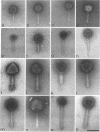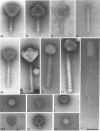Abstract
Direct electron microscopy of bacteriophages adsorbed to a carbon film without prior enrichment by specific host strains or concentration by physical or chemical methods was used to study the morphological diversity of natural bacteriophage assemblages in a North German lake. All samples contained a mixture of morphologically different tailed viruses, which were regarded as bacteriophages. Most of them had isometric heads and long noncontractile tails, belonging to morphotype B1 (Siphoviridae). In addition, members of morphotypes A1 (Myoviridae), B2 (Siphoviridae with elongated heads), and C1 (Podoviridae) were present in lower numbers. Only one cubic virus was detected, while no filamentous or pleomorphic phages were found. Up to 11 different phages per sample, and a total of 39 phages when all samples were considered together, could be distinguished by morphological criteria. The total number of phages was estimated to be on the order of 108/ml.
Full text
PDF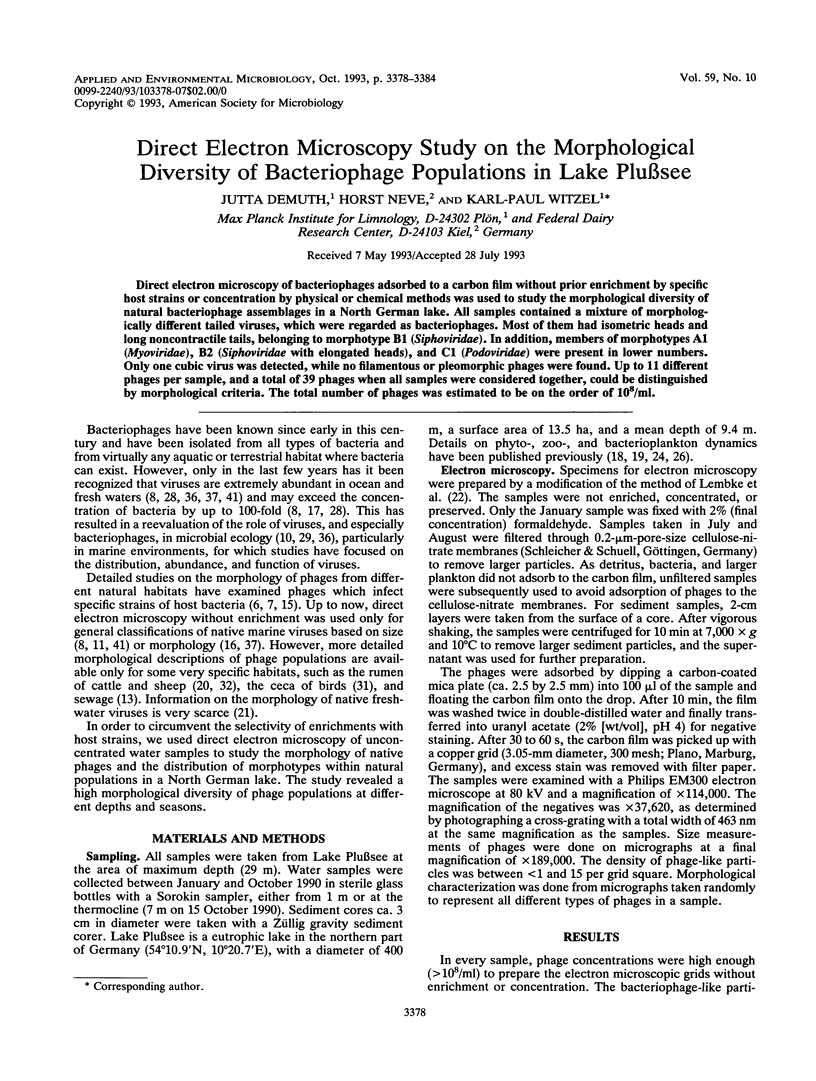
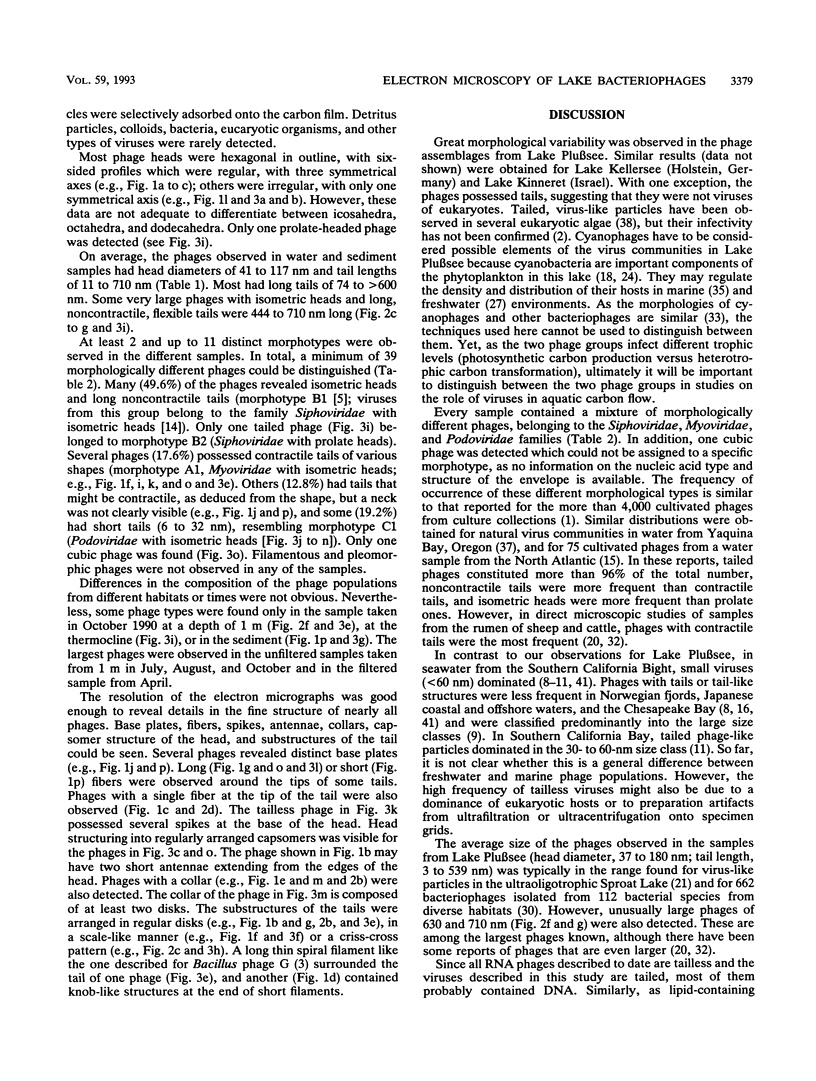
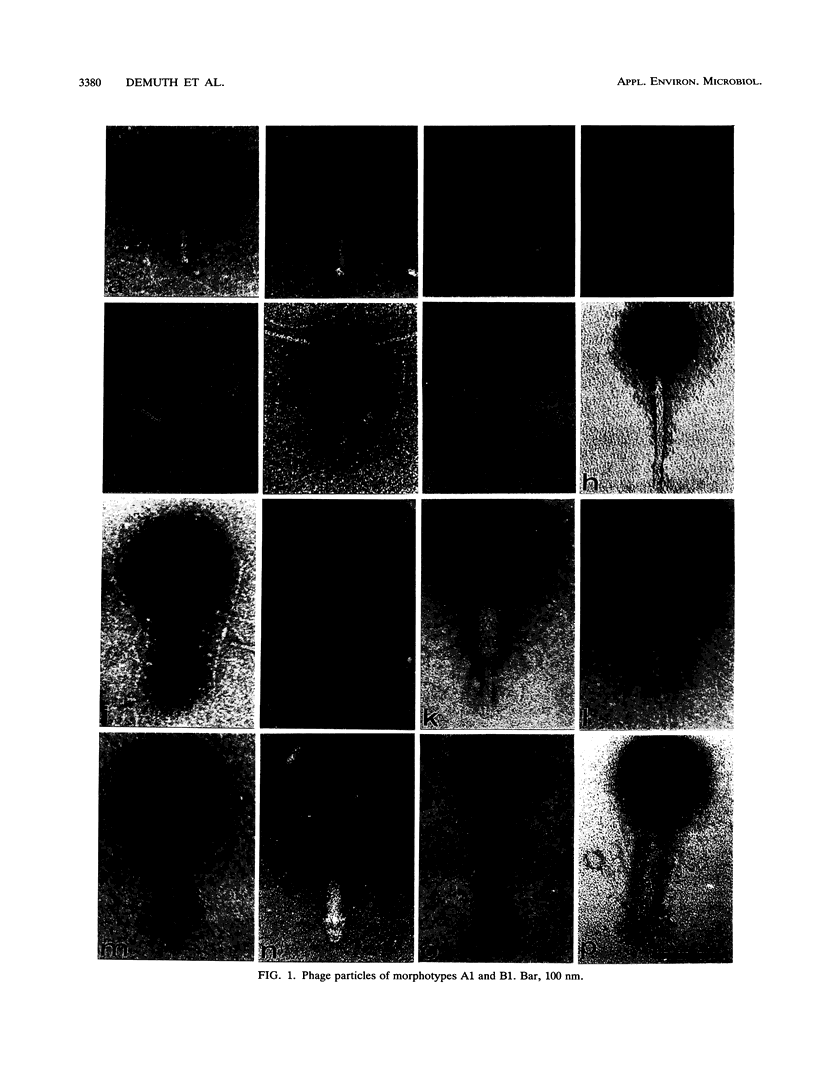
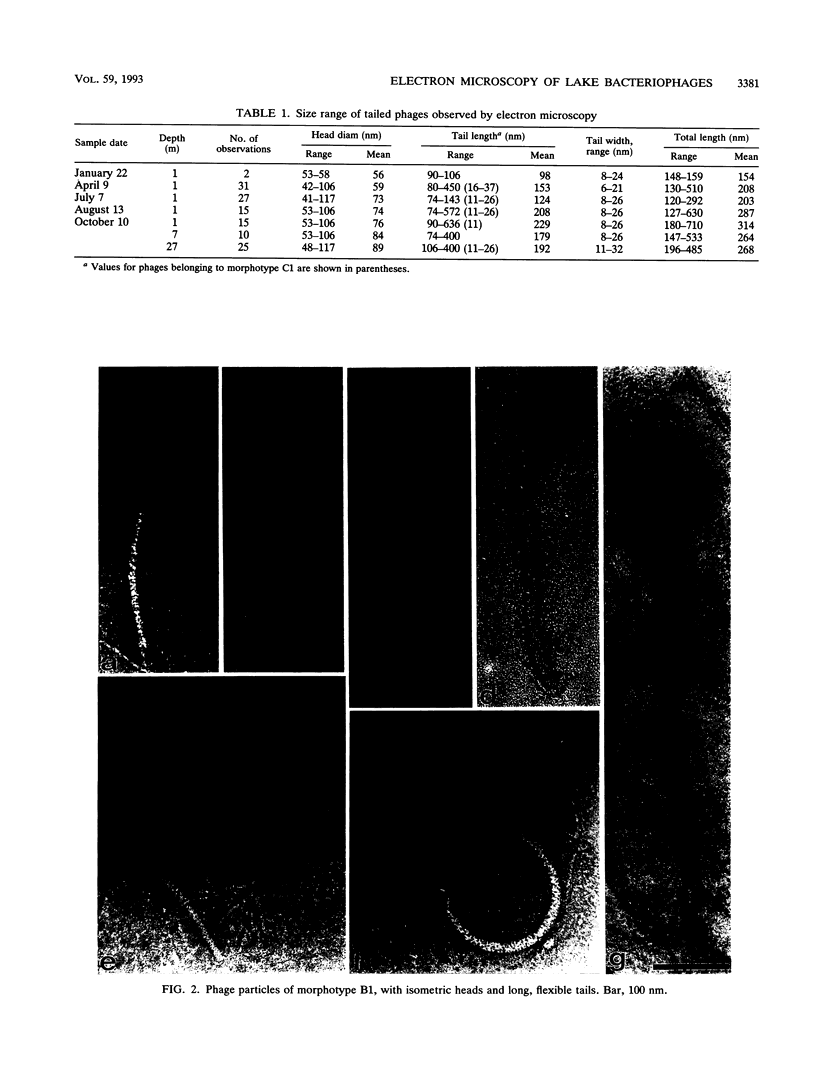
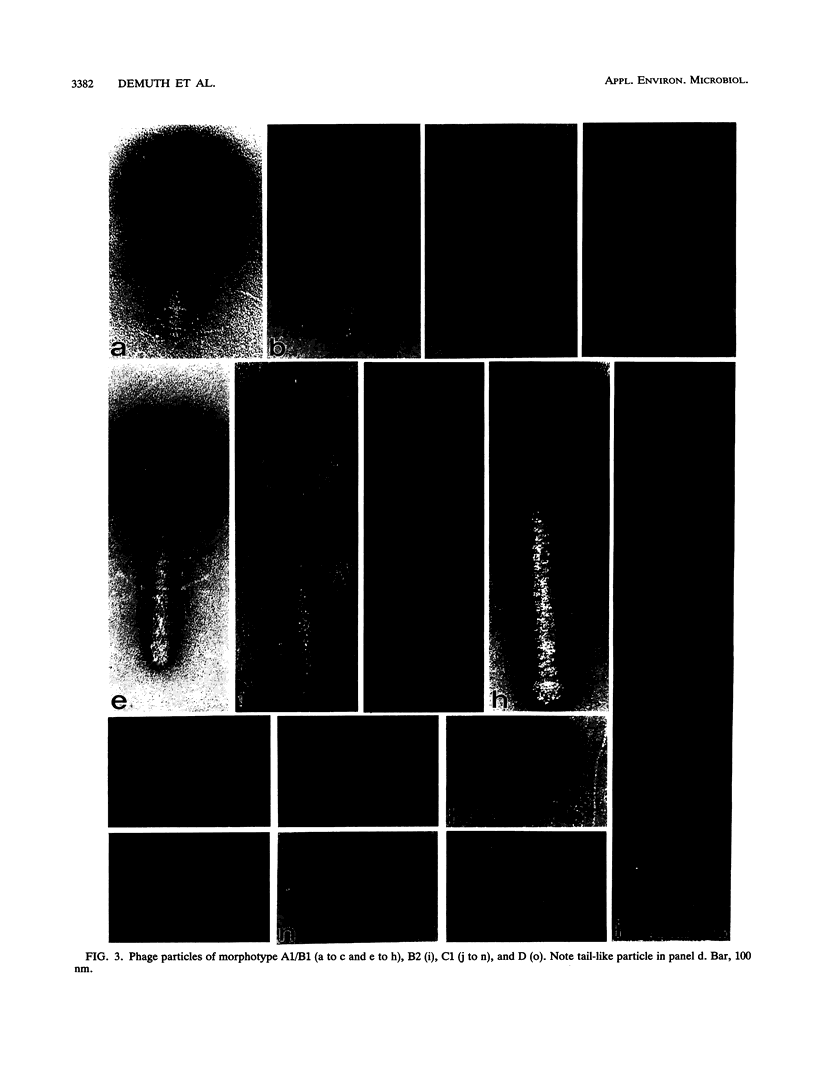
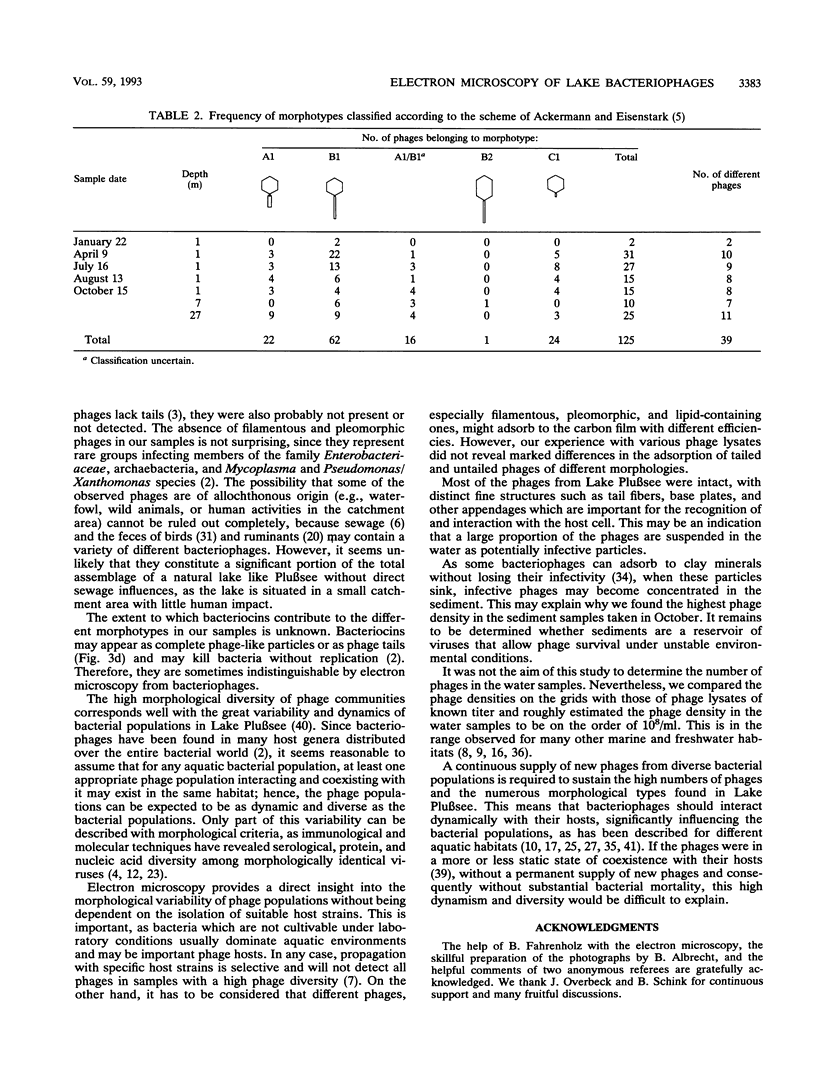
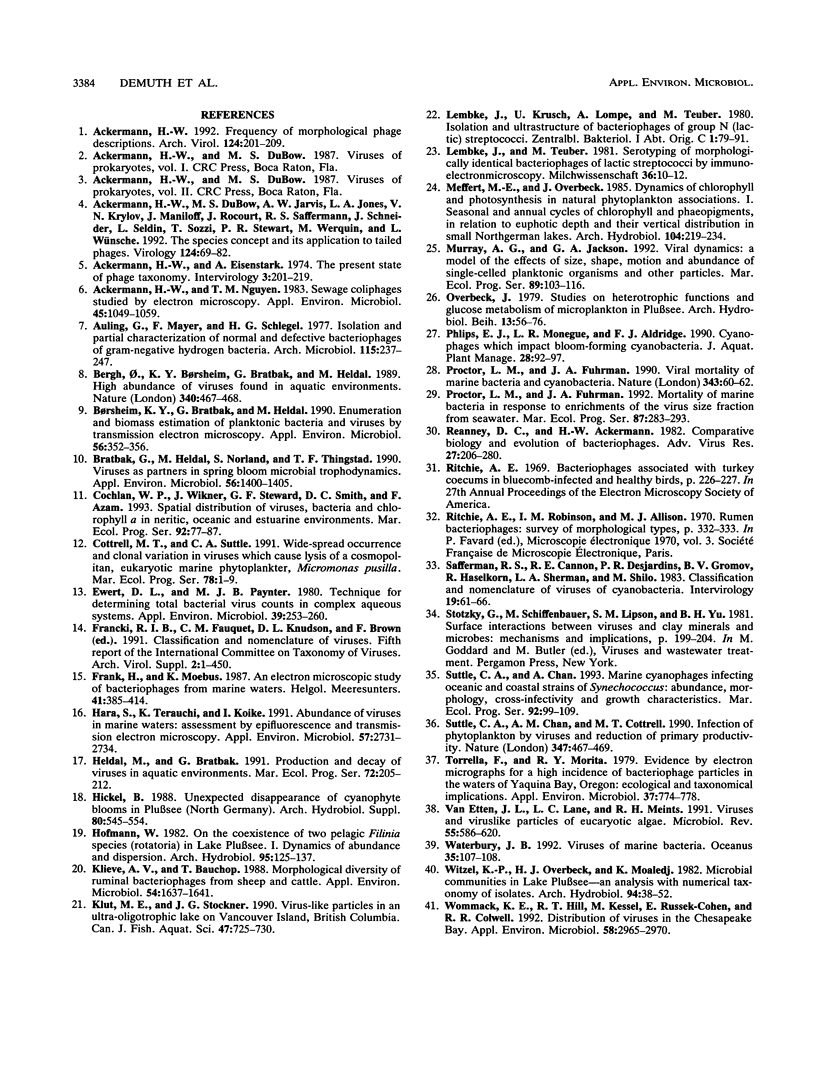
Images in this article
Selected References
These references are in PubMed. This may not be the complete list of references from this article.
- Ackermann H. W., DuBow M. S., Jarvis A. W., Jones L. A., Krylov V. N., Maniloff J., Rocourt J., Safferman R. S., Schneider J., Seldin L. The species concept and its application to tailed phages. Arch Virol. 1992;124(1-2):69–82. doi: 10.1007/BF01314626. [DOI] [PubMed] [Google Scholar]
- Ackermann H. W., Eisenstark A. The present state of phage taxonomy. Intervirology. 1974;3(4):201–219. doi: 10.1159/000149758. [DOI] [PubMed] [Google Scholar]
- Ackermann H. W. Frequency of morphological phage descriptions. Arch Virol. 1992;124(3-4):201–209. doi: 10.1007/BF01309802. [DOI] [PubMed] [Google Scholar]
- Ackermann H. W., Nguyen T. M. Sewage coliphages studied by electron microscopy. Appl Environ Microbiol. 1983 Mar;45(3):1049–1059. doi: 10.1128/aem.45.3.1049-1059.1983. [DOI] [PMC free article] [PubMed] [Google Scholar]
- Auling G., Mayer F., Schlegel H. G. Isolation and partial characterization of normal and defective bacteriophages of gram-negative hydrogen bacteria. Arch Microbiol. 1977 Dec 15;115(3):237–247. doi: 10.1007/BF00446448. [DOI] [PubMed] [Google Scholar]
- Bergh O., Børsheim K. Y., Bratbak G., Heldal M. High abundance of viruses found in aquatic environments. Nature. 1989 Aug 10;340(6233):467–468. doi: 10.1038/340467a0. [DOI] [PubMed] [Google Scholar]
- Bratbak G., Heldal M., Norland S., Thingstad T. F. Viruses as partners in spring bloom microbial trophodynamics. Appl Environ Microbiol. 1990 May;56(5):1400–1405. doi: 10.1128/aem.56.5.1400-1405.1990. [DOI] [PMC free article] [PubMed] [Google Scholar]
- Børsheim K. Y., Bratbak G., Heldal M. Enumeration and biomass estimation of planktonic bacteria and viruses by transmission electron microscopy. Appl Environ Microbiol. 1990 Feb;56(2):352–356. doi: 10.1128/aem.56.2.352-356.1990. [DOI] [PMC free article] [PubMed] [Google Scholar]
- Ewert D. L., Paynter M. J. Technique for determining total bacterial virus counts in complex aqueous systems. Appl Environ Microbiol. 1980 Jan;39(1):253–260. doi: 10.1128/aem.39.1.253-260.1980. [DOI] [PMC free article] [PubMed] [Google Scholar]
- Hara S., Terauchi K., Koike I. Abundance of viruses in marine waters: assessment by epifluorescence and transmission electron microscopy. Appl Environ Microbiol. 1991 Sep;57(9):2731–2734. doi: 10.1128/aem.57.9.2731-2734.1991. [DOI] [PMC free article] [PubMed] [Google Scholar]
- Klieve A. V., Bauchop T. Morphological diversity of ruminal bacteriophages from sheep and cattle. Appl Environ Microbiol. 1988 Jun;54(6):1637–1641. doi: 10.1128/aem.54.6.1637-1641.1988. [DOI] [PMC free article] [PubMed] [Google Scholar]
- Reanney D. C., Ackermann H. W. Comparative biology and evolution of bacteriophages. Adv Virus Res. 1982;27:205–280. doi: 10.1016/s0065-3527(08)60436-4. [DOI] [PubMed] [Google Scholar]
- Safferman R. S., Cannon R. E., Desjardins P. R., Gromov B. V., Haselkorn R., Sherman L. A., Shilo M. Classification and nomenclature of viruses of cyanobacteria. Intervirology. 1983;19(2):61–66. doi: 10.1159/000149339. [DOI] [PubMed] [Google Scholar]
- Torrella F., Morita R. Y. Evidence by electron micrographs for a high incidence of bacteriophage particles in the waters of Yaquina Bay, oregon: ecological and taxonomical implications. Appl Environ Microbiol. 1979 Apr;37(4):774–778. doi: 10.1128/aem.37.4.774-778.1979. [DOI] [PMC free article] [PubMed] [Google Scholar]
- Van Etten J. L., Lane L. C., Meints R. H. Viruses and viruslike particles of eukaryotic algae. Microbiol Rev. 1991 Dec;55(4):586–620. doi: 10.1128/mr.55.4.586-620.1991. [DOI] [PMC free article] [PubMed] [Google Scholar]
- Wommack K. E., Hill R. T., Kessel M., Russek-Cohen E., Colwell R. R. Distribution of viruses in the Chesapeake Bay. Appl Environ Microbiol. 1992 Sep;58(9):2965–2970. doi: 10.1128/aem.58.9.2965-2970.1992. [DOI] [PMC free article] [PubMed] [Google Scholar]



